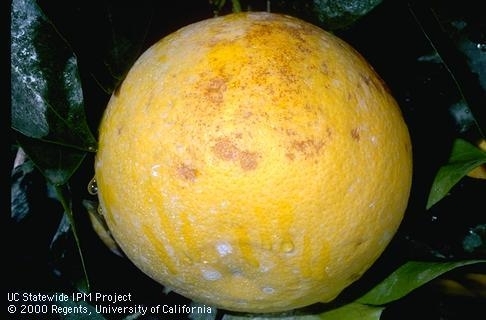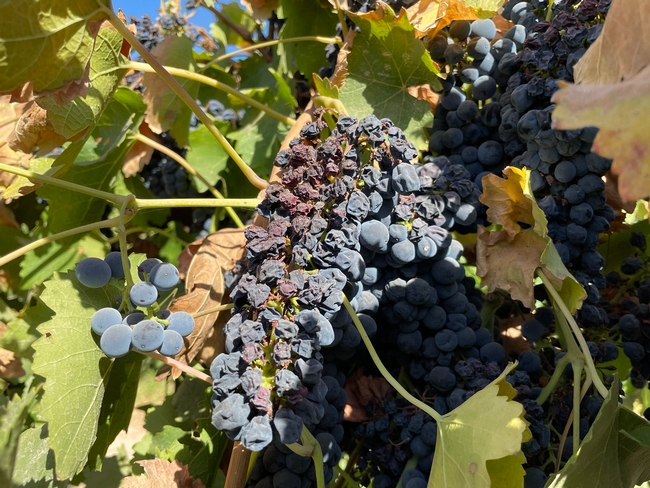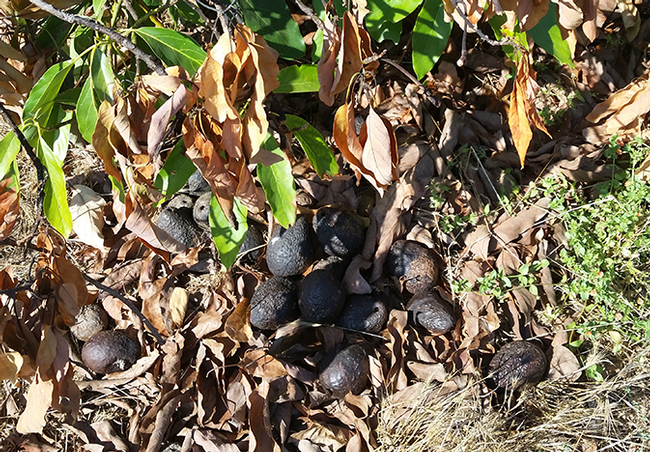UCCE, USDA California Climate Hub launch CalAgroClimate decision-support tool
Climate and weather variability pose increasing risks to farmers. As world leaders gather in Egypt at COP27 to address the climate crisis, University of California Cooperative Extension and the USDA California Climate Hub are launching new web-based tools to provide farmers with locally relevant and crop-specific information to make production decisions that reduce risk.
“Integrating historical weather data and forecast information with meaningful agricultural decision support information holds the potential to reduce a crop's vulnerability to such risks,” said Tapan Pathak, UC Cooperative Extension climate adaptation specialist at UC Merced.

Pathak is collaborating on building the decision support tool with partners from the U.S. Department of Agriculture, California Climate Hub, UC Cooperative Extension and UC Agriculture and Natural Resources' Informatics and Geographic Information Systems or IGIS.
“CalAgroClimate has been designed to support climate-enabled decision making for those working in the California specialty crop industry,” said Steven Ostoja, Director USDA California Climate Hub. “The USDA California Climate Hub is a proud collaborator on this important initiative to ensure the state's agricultural industry can continue to thrive in a future of climate change.”
Shane Feirer and Robert Johnson of UC ANR IGIS designed the interactive tools on the website and Lauren Parker of the USDA California Climate Hub contributed to content organization.An advisory panel composed of colleagues from UCCE and the Natural Resources Conservation Service ensure CalAgroClimate tools are relevant to stakeholder needs.
“CalAgroClimate is an amazing new tool that puts comprehensive past and forecast weather data at any grower's disposal,” said Mark Battany, UC Cooperative Extension water management and biometeorology advisor for San Luis Obispo and Santa Barbara counties.
“California's high-value crops are subject to a myriad of weather-related risk factors; this tool will allow growers to better address both near-term and long-term risks, and in the end grow more profitably, said Battany, who is a member of the CalAgroClimate advisory panel.
Growers and crop consultants can use CalAgroClimate's crop and location-specific tools and resources to help make on-farm decisions, such as preparing for frost or untimely rain and taking advantage of expected favorable conditions.
CalAgroClimate currently includes heat advisory, frost advisory, crop phenology and pest advisory tools.
Heat advisory tool: Extreme heat poses a danger for people, animals and crops. With this tool, users can select location and temperature threshold (e.g. 90 F, 95 F 100 F) based on their crop-specific heat tolerance level and the tool will provide a customized map of heat risk for next seven days for that location, including the number of consecutive days with temperature above that threshold. Users can also assess overall heat risks across the state for a selected temperature threshold as well. Having an early warning about hot temperatures, growers can take steps to reduce risks associated with extreme heat such as providing shade, changing farm workers' schedules and applying additional irrigation.
Frost advisory tool: Frost risk is a very serious issue for many specialty crops across California. Similar to the heat advisory tool, this tool provides a customized map of frost advisory for next seven days for a user's location, and forecast of consecutive days with temperature falling below the selected temperature thresholds (e.g. 35 F, 32 F, 28 F). Similar to the heat advisory, early warning about cold temperatures can provide growers some time to protect their crops from frost damage.
Crop phenology tool: The scientists have developed a-crop specific and location-specific crop phenology tool to help users keep track of growing degree days accumulations and estimate critical growth stages. CalAgroClimate uses a high-resolution PRISM dataset to provide near real-time crop phenology information to users. This tool will inform growers about how their crop development compares to previous years, which can be helpful in planning activities specific to critical growth stages.
Pest advisory tool: Similar to crops, development of certain pests and diseases is controlled by temperature and heat unit accumulations. With the pest advisory tool, growers can keep track of estimated pest generations during the growing season to make pest management decisions.
“We are launching the website with this initial set of tools while working on adding more crop-specific information and several new tools in the near future, ” Pathak said. “We look forward to getting feedback from growers who use CalAgroClimate to make it even more useful.”

